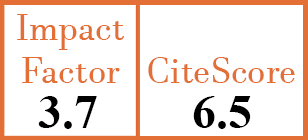Full Papers
Impact of cardiovascular risk factors in antiphospholipid syndrome: an observational study from the Spanish national registry
V. Moreno-Torres1, A. Royuela2, C. Tarín3, R. Castejón4, Á. Gutiérrez-Rojas5, P. Durán-Del campo6, S. Mellor-Pita7, P. Tutor-Ureta8, E. Sánchez9, M. Martínez-Urbistondo10, C. De Mendoza11, J.-A. Vargas-Núñez12, G. Ruiz-Irastorza13
- Systemic Autoimmune Diseases Unit, Internal Medicine Service, IDIPHIM (University Hospital Puerta de Hierro Research Institute), Hospital Universitario Puerta de Hierro Majadahonda, Madrid, Spain. victor.moreno.torres.1988@gmail.com
- Clinical Biostatistics Unit, Health Research Institute Puerta de Hierro-Segovia de Arana, CIBERESP, Madrid, Spain.
- Basic Medical Sciences, Faculty of Medicine, Universidad CEU San Pablo, Madrid, Spain.
- Systemic Autoimmune Diseases Unit, Internal Medicine Service, IDIPHIM (University Hospital Puerta de Hierro Research Institute), Hospital Universitario Puerta de Hierro Majadahonda, Madrid, Spain.
- Systemic Autoimmune Diseases Unit, Internal Medicine Service, IDIPHIM (University Hospital Puerta de Hierro Research Institute), Hospital Universitario Puerta de Hierro Majadahonda, Madrid, Spain.
- Systemic Autoimmune Diseases Unit, Internal Medicine Service, IDIPHIM (University Hospital Puerta de Hierro Research Institute), Hospital Universitario Puerta de Hierro Majadahonda, Madrid, Spain.
- Systemic Autoimmune Diseases Unit, Internal Medicine Service, IDIPHIM (University Hospital Puerta de Hierro Research Institute), Hospital Universitario Puerta de Hierro Majadahonda, Madrid, Spain.
- Systemic Autoimmune Diseases Unit, Internal Medicine Service, IDIPHIM (University Hospital Puerta de Hierro Research Institute), Hospital Universitario Puerta de Hierro Majadahonda, Madrid, Spain.
- Systemic Autoimmune Diseases Unit, Internal Medicine Service, IDIPHIM (University Hospital Puerta de Hierro Research Institute), Hospital Universitario Puerta de Hierro Majadahonda, Madrid, Spain.
- Systemic Autoimmune Diseases Unit, Internal Medicine Service, IDIPHIM (University Hospital Puerta de Hierro Research Institute), Hospital Universitario Puerta de Hierro Majadahonda, Madrid, Spain.
- Systemic Autoimmune Diseases Unit, Internal Medicine Service, IDIPHIM (University Hospital Puerta de Hierro Research Institute), Hospital Universitario Puerta de Hierro Majadahonda, Madrid, Spain.
- Systemic Autoimmune Diseases Unit, Internal Medicine Service, IDIPHIM (University Hospital Puerta de Hierro Research Institute), Hospital Universitario Puerta de Hierro Majadahonda, Madrid, Spain.
- Autoimmune Diseases Research Unit, BioCruces Bizkaia Health Research Institute, UPV/EHU, Bizkaia, Spain.
CER15318
2022 Vol.40, N°11
PI 2161, PF 2166
Full Papers
Free to view
(click on article PDF icon to read the article)
PMID: 35238753 [PubMed]
Received: 08/11/2021
Accepted : 24/01/2022
In Press: 01/03/2022
Published: 05/11/2022
Abstract
OBJECTIVES:
To determine the burden and impact of cardiovascular risk factors (CRF) in antiphospholipid syndrome (APS) patients.
METHODS:
Analysis of the patients diagnosed with APS identified in the Spanish Hospital Discharge Database between 2016 and 2017. We analysed the admissions due to arterial (ATE) and venous thromboembolic events (VTE) and evaluated the incidence and the attributed risk of each CRF.
RESULTS:
5424 admissions in patients diagnosed with APS were identified. 64.6% were women and the mean age was 54.6. The mortality rate was 3.1%. Overall, 35.8% of patients had hypertension, 14% were diabetic, 21.7% hypercholesterolaemic, 9.9% obese and 26.7% smokers. Thromboembolic events (67.9% arterial and 32.1% venous) accounted for 11.9% of admissions and 7.1% of deaths. Male sex (OR 1.83, 95% CI 1.41–2.21), cholesterol (OR 1.25, 95% CI 1.01–1.54) and smoking (OR 1.49, 95% CI 1.22-1.81) were independently associated with thromboembolic events. Meanwhile, patients with ATE were older (57 vs. 54.1 years p=0.033), and presented more secondary APS (17.1% vs. 10.6%, p=0.034), hypertension (47.7% vs. 33.5%, p=0.001), diabetes (16.9% vs. 9.6%, p=0.017), cholesterol (34.3% vs. 17.8%, p<0.001) and smoking habit (41.2% vs. 24%, p<0.001) when compared with VTE. Risk factors independently associated with ATE events were male sex (OR=1.61, 95% CI=1.30–2.03), hypertension (OR=1.30, 95% CI=1.03–1.64), cholesterol (OR=1.51, 95% CI=1.18–1.94) and smoking habit (OR=1.84, 95% CI=1.47–2.32), while VTE events were determined by male sex (OR=2.06, 95% CI=1.53–2.77) and obesity (OR=1.61, CI=1.02–2.52).
CONCLUSIONS:
Thromboembolic events in APS were in part determined by a high prevalence of CRF. The identification of distinct profiles may allow us to undertake a more personalised approach to reduce thromboembolic events and to individualise anticoagulant and antiplatelet therapy.


